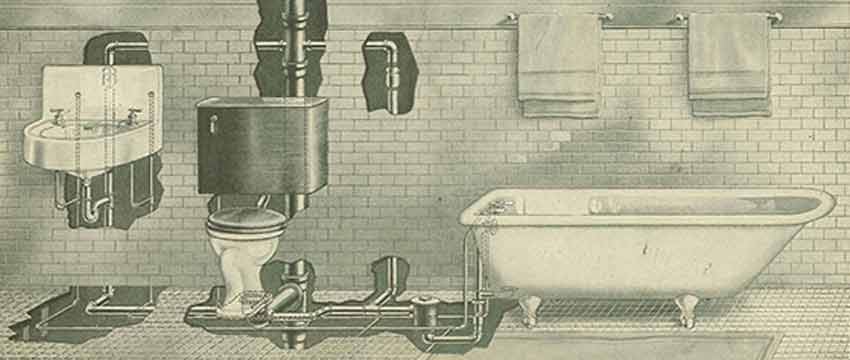The History of Plumbing with us
Publication date: April, 14, 2022

Plumbing in Rome
Ancient Roman engineers designed bathrooms, fountains, and sewers to evacuate dirty water using a system of clay pipes. These clay pipes, the first known plumbing materials, were hidden underground and supplied water to the fountains of palaces. They were 17 kilometers long.
One of the oldest sewers is the Great Cloaca. It was built in 600 BC. This sewer was dug in the subsoil and ran through the city of Rome from northeast to southwest. It had numerous forks to carry sewage from palaces and public baths, not just private homes. By the way, the Great Cloaca is still functioning today, only now as a storm drainage system. Many canals, bridges, and aqueducts were scattered throughout the empire to provide water for the entire population. At the same time, a significant increase in personal hygiene led to a reduction in pests and diseases.
But the Romans also realized the importance of keeping plumbing in good condition, which led to the specialization of a group of workers, today called plumbers. They were responsible for regularly cleaning the ducts and keeping the water tanks clean.
The word plumber comes from the Latin "Plumbum" which means lead (Pb). This is because a plumber was a person who used to work with lead, which was dangerous for the plumber himself. Lead was used as the main material in creating pipelines. Working with lead is still one of the dangers that a modern plumber faces while on the job.
Plumbing in the Modern Era

Modern sanitary ware was installed in the late nineteenth century using cast iron pipes. These pipes, designed to supply water, were welded with a lead torch that melted the metal over the joints, bringing the lead into contact with the water. This system is now banned because the wear and tear of the pipes due to friction with water leads to the release of lead particles that reach consumers. Cast iron has been replaced by other plumbing materials such as copper, steel, PVC or polypropylene, which are welded with various environmentally friendly materials.
